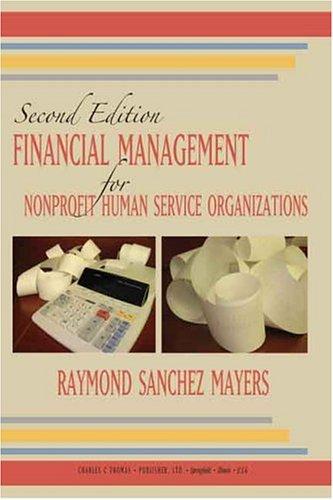Answered step by step
Verified Expert Solution
Question
1 Approved Answer
Do bonds reduce the overall risk of an investment portfolio? Let x be a random variable representing annual percent return for Vanguard Total Stock Index
Do bonds reduce the overall risk of an investment portfolio? Let x be a random variable representing annual percent return for Vanguard Total Stock Index all stocks Let y be a random variable representing annual return for Vanguard Balanced Index stock and bond For the past several years, we have the following data.
x:
y:
A button hyperlink to the SALT program that reads: Use SALT.
a Compute Sigma xSigma xSigma ySigma y
Sigma x
Sigma x
Sigma y
Sigma y
b Use the results of part a to compute the sample mean, variance, and standard deviation for x and for yRound your answers to four decimal places.
x y
x
s
s
c Compute a Chebyshev interval around the mean for x values and also for y values. Round your answers to two decimal places.
x y
Lower Limit
Upper Limit
Use the intervals to compare the two funds.
of the returns for the balanced fund fall within a narrower range than those of the stock fund.
of the returns for the stock fund fall within a narrower range than those of the balanced fund.
of the returns for the balanced fund fall within a narrower range than those of the stock fund.
of the returns for the stock fund fall within a wider range than those of the balanced fund.
Correct: Your answer is correct.
d Compute the coefficient of variation for each fund. Round your answers to the nearest whole number.
x y
CV
Use the coefficients of variation to compare the two funds.
For each unit of return, the stock fund has lower risk.
For each unit of return, the balanced fund has lower risk.
For each unit of return, the funds have equal risk.
Correct: Your answer is correct.
If s represents risks and x represents expected return, then sx can be thought of as a measure of risk per unit of expected return. In this case, why is a smaller CV better? Explain.
A smaller CV is better because it indicates a higher risk per unit of expected return.
A smaller CV is better because it indicates a lower risk per unit of expected return.
Step by Step Solution
There are 3 Steps involved in it
Step: 1

Get Instant Access to Expert-Tailored Solutions
See step-by-step solutions with expert insights and AI powered tools for academic success
Step: 2

Step: 3

Ace Your Homework with AI
Get the answers you need in no time with our AI-driven, step-by-step assistance
Get Started


